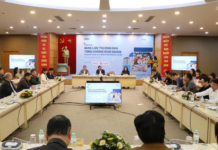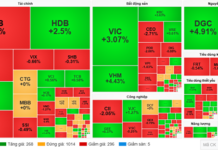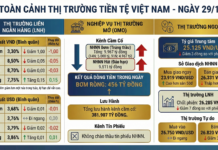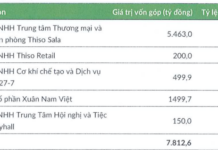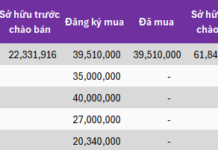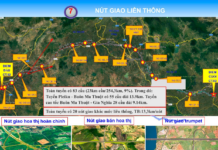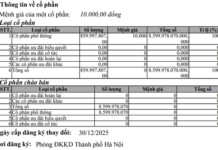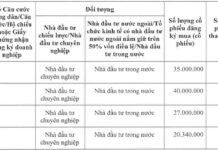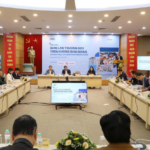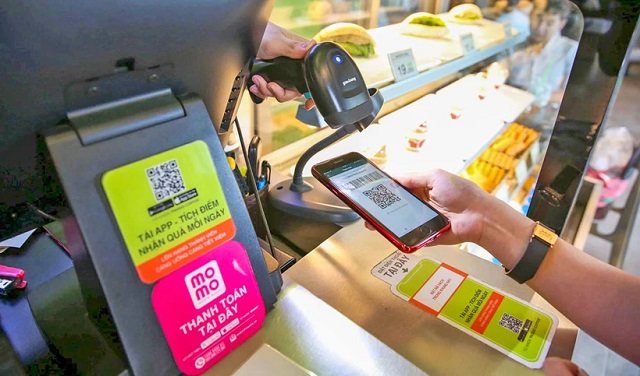
Consumers making payments with their e-wallets.
|
These are official and sustainable financial service channels that operate within the legal framework and are regulated by competent state agencies.
Two “slices” of the financial picture
Based on the 4.0 Revolution, financial services have become more popular in countries, especially developing ones. However, about 30% of adults worldwide still lack access to traditional financial systems.
Therefore, the development of inclusive finance to ensure that all people have access to and use financial services at a reasonable cost and convenience is the trend of the 21st century.
Vietnam is no exception to the global trend, as the government has been cooperating early on with the World Bank (WB) to develop a National Strategy for Financial Inclusion. Specifically, on January 22, 2020, the Prime Minister issued Decision No. 149/QD-TTg, approving the National Strategy for Financial Inclusion by 2025, with a vision towards 2030 (Decision 149).
This decision aims to maximize the number of people who can safely access and use appropriate, reasonably priced, responsible, and sustainable financial products and services provided by legal entities. Decision 149 sets specific targets for 2025, including: at least 80% of adults having transaction accounts with licensed organizations; 25-30% of adults saving at credit institutions (CIs).
| To promote the development of inclusive finance and bring stable, sustainable, and affordable financial services to customer segments that do not meet the requirements or are unable to access traditional CIs, microfinance institutions, and fintech companies are the optimal solution. |
However, despite technological support, traditional CIs seem to be slow in reaching all user segments, especially low-income earners and people in remote areas.
It is undeniable that traditional CIs have taken the lead in the digital transformation to popularize modern financial services. As a result, the proportion of adults with transaction accounts or savings has grown rapidly. But this is only a “slice” of the picture in major cities, where there are favorable conditions in terms of infrastructure.
Data from the WB also shows another “slice” of the picture. While the proportion of account ownership increased by more than 20% from 2017 to 2022, when broken down by income level, the proportion of adults in the low-income group only increased by about 6% over five years, while higher-income groups experienced faster growth. Regarding the reasons for not having an account, in 2022, more than 23% cited “financial institutions are too far away” as the reason for not having an account, despite improvements in income.
Empowering the underprivileged
In reality, in remote areas where distance and population density are sparse, the demand for financial services is mostly limited to basic payment transactions. As these transactions have very low-profit margins, balancing profits and operating costs for a branch in such areas becomes a challenging equation for traditional CIs.
To address this issue, some banks have experimented with agency systems, but the economic efficiency has not met expectations. Moreover, most customers in remote areas do not meet the criteria for bank access due to a lack of information for customer scoring, low income, and unstable income.
WB data also shows that in terms of payment activities, while the national average for payments through CIs and payment intermediaries exceeds 23%, this figure is only 2.9% for the low-income group, while cash payments stand at 51.2%.
In fact, the demand for modern financial services among low-income groups does exist, as they have borrowing needs for large, unexpected expenses. This “fertile ground” has allowed “black credit” to thrive and become a hotspot in recent times.
Therefore, to effectively implement Decision 149 and ensure that “no one is left behind,” it is necessary to create favorable conditions for underprivileged groups to access “white credit” channels. These are official and sustainable financial service channels that operate within the legal framework and are regulated by competent state agencies.
Removing legal barriers
Based on the results of the first three years of implementing Decision 149, it is evident that utilizing two tools: microfinance institutions and fintech companies, is an effective solution. With a foundation in digital technology, including the Internet of Things, 5G wireless technology, big data, and artificial intelligence, entirely new financial organization models have emerged. These models can meet market demands, promote inclusive finance development, and provide stable, sustainable, and affordable financial services to customer segments that traditional CIs do not serve.
Operating on a digital platform eliminates geographical distances and simplifies the process of building personal financial data. Due to the network structure of financial organizations operating on digital technology, operating costs are significantly lower than those of traditional banks. Consequently, they can offer financial services with low-profit margins, transcending geographical barriers, and facilitating access for underprivileged customer groups.
This is because the operating principles of financial technology enterprises differ entirely from those of traditional financial institutions. These organizations accept small profits but target a large number of transactions, ensuring sufficient costs and attractive profits.
Dr. NGUYEN DUC KIEN, Former Head of the Prime Minister’s Economic Advisory Group, Chairman of the IDS Scientific Council
Driving Digital Transformation in the HR Industry
Thanks to technology, the labor management tasks, procedures, and administrative processes that used to be done manually will be significantly reduced.

